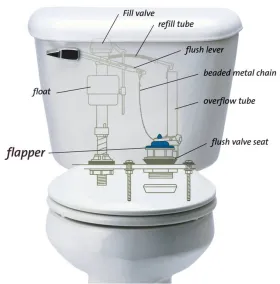16163
17112
16140
Title
Check Your Toilet
Sections
Major Storm Forecast | Sandbag Stations Activated
Tormenta fuerte pronosticada | Estaciones de sacos de arena activadas.
All SBPL locations will be closed from 12/22 through 12/26 and on 1/1/26 for the winter holidays. For all the details about adjusted hours and closures, visit our Winter Holiday Hours page.
It's estimated that 20 percent of all toilets leak. Even if you can't hear the leak, you could be losing up to 200 gallons of water every day!

Many toilets in Santa Barbara leak overnight when the water pressure rises. This happens when the water level in the toilet tank rises above the overflow tube and runs down the tube constantly.
Not all universal flappers are universal, and a mismatched flapper can result in gallons of undetected water waste per flush. To check this, you will need to look inside the tank.
735 Anacapa Street
Santa Barbara, CA 93101
Phone: (805) 963-0611
Hours: 9:00 a.m. to 5:00 p.m., Monday - Thursday, and alternate Fridays.
City of Santa Barbara, PO Box 1990
Santa Barbara, CA 93102-1990
Sign up for one or more newsletters on many city topics
